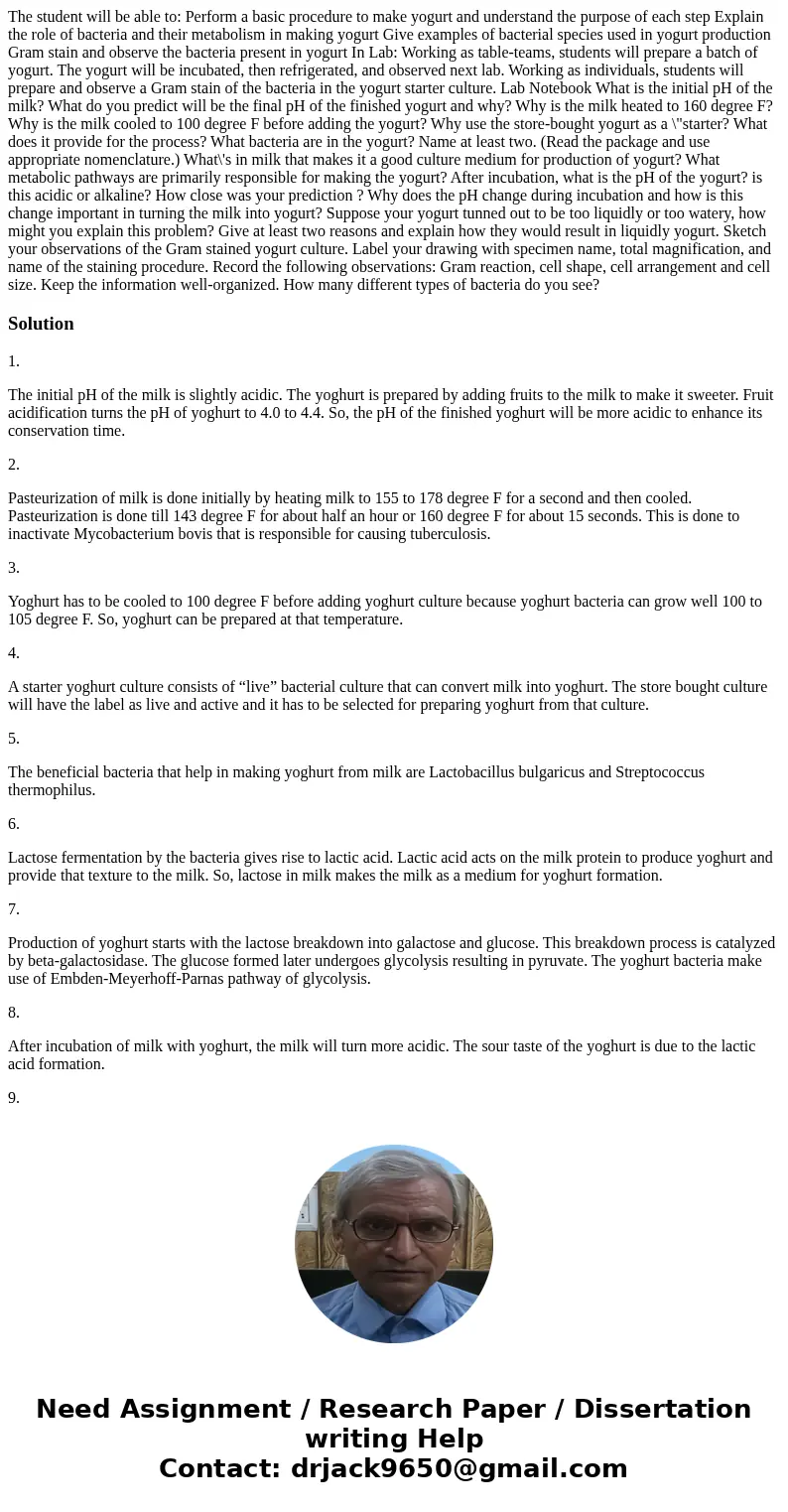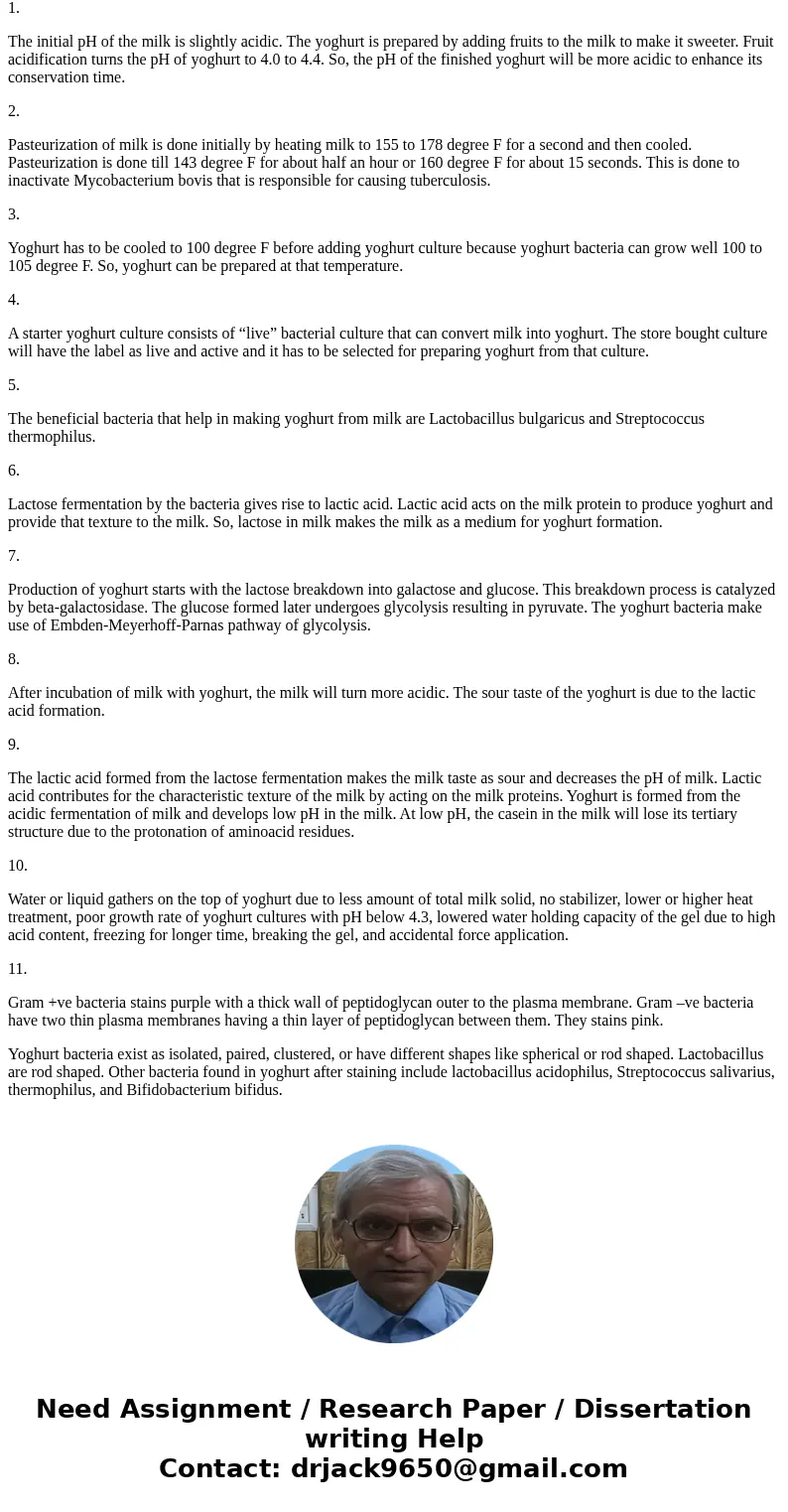The student will be able to Perform a basic procedure to mak
Solution
1.
The initial pH of the milk is slightly acidic. The yoghurt is prepared by adding fruits to the milk to make it sweeter. Fruit acidification turns the pH of yoghurt to 4.0 to 4.4. So, the pH of the finished yoghurt will be more acidic to enhance its conservation time.
2.
Pasteurization of milk is done initially by heating milk to 155 to 178 degree F for a second and then cooled. Pasteurization is done till 143 degree F for about half an hour or 160 degree F for about 15 seconds. This is done to inactivate Mycobacterium bovis that is responsible for causing tuberculosis.
3.
Yoghurt has to be cooled to 100 degree F before adding yoghurt culture because yoghurt bacteria can grow well 100 to 105 degree F. So, yoghurt can be prepared at that temperature.
4.
A starter yoghurt culture consists of “live” bacterial culture that can convert milk into yoghurt. The store bought culture will have the label as live and active and it has to be selected for preparing yoghurt from that culture.
5.
The beneficial bacteria that help in making yoghurt from milk are Lactobacillus bulgaricus and Streptococcus thermophilus.
6.
Lactose fermentation by the bacteria gives rise to lactic acid. Lactic acid acts on the milk protein to produce yoghurt and provide that texture to the milk. So, lactose in milk makes the milk as a medium for yoghurt formation.
7.
Production of yoghurt starts with the lactose breakdown into galactose and glucose. This breakdown process is catalyzed by beta-galactosidase. The glucose formed later undergoes glycolysis resulting in pyruvate. The yoghurt bacteria make use of Embden-Meyerhoff-Parnas pathway of glycolysis.
8.
After incubation of milk with yoghurt, the milk will turn more acidic. The sour taste of the yoghurt is due to the lactic acid formation.
9.
The lactic acid formed from the lactose fermentation makes the milk taste as sour and decreases the pH of milk. Lactic acid contributes for the characteristic texture of the milk by acting on the milk proteins. Yoghurt is formed from the acidic fermentation of milk and develops low pH in the milk. At low pH, the casein in the milk will lose its tertiary structure due to the protonation of aminoacid residues.
10.
Water or liquid gathers on the top of yoghurt due to less amount of total milk solid, no stabilizer, lower or higher heat treatment, poor growth rate of yoghurt cultures with pH below 4.3, lowered water holding capacity of the gel due to high acid content, freezing for longer time, breaking the gel, and accidental force application.
11.
Gram +ve bacteria stains purple with a thick wall of peptidoglycan outer to the plasma membrane. Gram –ve bacteria have two thin plasma membranes having a thin layer of peptidoglycan between them. They stains pink.
Yoghurt bacteria exist as isolated, paired, clustered, or have different shapes like spherical or rod shaped. Lactobacillus are rod shaped. Other bacteria found in yoghurt after staining include lactobacillus acidophilus, Streptococcus salivarius, thermophilus, and Bifidobacterium bifidus.


 Homework Sourse
Homework Sourse